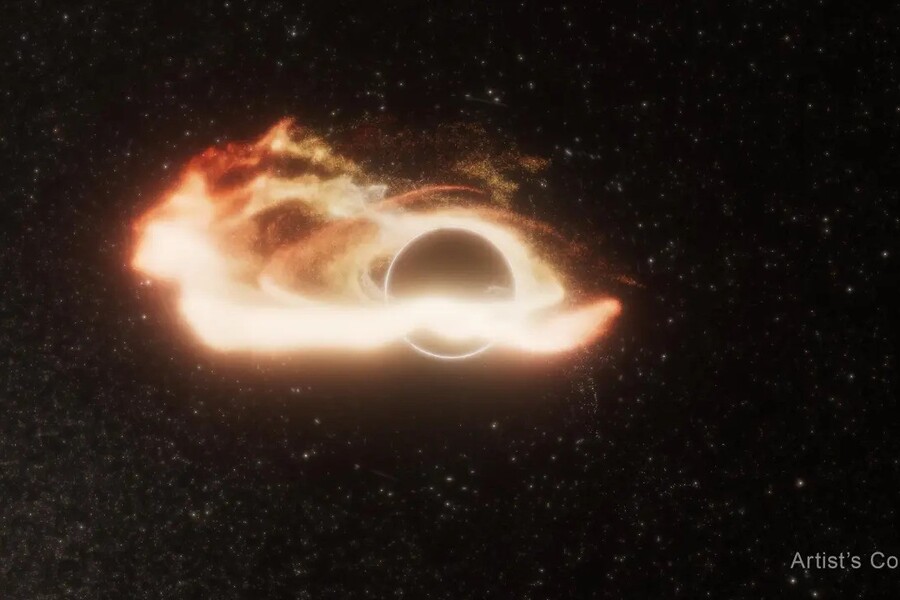In a striking discovery that’s challenging conventional understanding of black hole behavior, NASA’s Hubble Space Telescope has observed a supermassive black hole ripping apart a star far from the center of its host galaxy. The extraordinary cosmic spectacle, identified as a tidal disruption event (TDE) and named AT2024tvd, marks the first time such a destructive event has been captured optically outside a galactic core.
Black holes are known as some of the most extreme gravitational entities in the universe—regions of space so dense that nothing, not even light, can escape once it crosses the event horizon. While black holes are typically dormant, they become visible when feeding, or “accreting,” material. This feeding frenzy emits enormous bursts of energy across the electromagnetic spectrum.
That’s exactly what Hubble observed: a brilliant burst of radiation caused when a star wandered too close to a rogue black hole. This intense radiation, spanning from X-rays to radio waves, signaled the star’s demise as it was torn apart by gravitational forces—a phenomenon astronomers colloquially call “spaghettification.”
What makes AT2024tvd particularly compelling is its location. “The classic location where you expect massive black holes to be in a galaxy is in the center, like our Sag A* at the center of the Milky Way,” said Yuhan Yao, lead researcher from the University of California, Berkeley. “But this one, it’s not at the center. It’s actually about 2,600 light years away.”
This marks the first optically discovered off-nuclear TDE, suggesting the presence of a massive black hole wandering through its galaxy, rather than being anchored at its core.
The mystery of how a supermassive black hole ends up adrift in a galaxy rather than fixed at its center likely lies in galactic mergers. When two galaxies collide and combine, each often brings its own central black hole. Over time, these black holes may interact gravitationally. While they are expected to eventually merge, some may be ejected from the center during the chaotic process.
“Massive black holes are always at the centers of galaxies, but we know that galaxies merge — that is how galaxies grow,” explained co-author Ryan Chornock, also from UC Berkeley. “When you have two galaxies that come together and become one, you have multiple black holes. Now, what happens? We expect they eventually come together, but theorists have predicted that there should be a population of black holes that are roaming around inside galaxies.”
Indeed, this particular galaxy harbors two supermassive black holes: one at the center, and one, now revealed through the TDE, wandering roughly 2,600 light-years from the core.
In addition to Hubble, the discovery involved observations from NASA’s Chandra X-ray Observatory and the National Radio Astronomy Observatory’s Very Large Array (VLA). These instruments helped trace the event across multiple wavelengths, confirming the off-center location and nature of the black hole involved.
The international team’s findings provide crucial observational evidence supporting theoretical predictions of “rogue” supermassive black holes and give insight into the complex dynamical processes that unfold when galaxies merge.
One tantalizing possibility is that the two supermassive black holes in this galaxy could one day merge. If that happens, the event would produce a cataclysmic release of gravitational waves—ripples in the fabric of space-time—that would be detectable on Earth by observatories like LIGO and Virgo.

